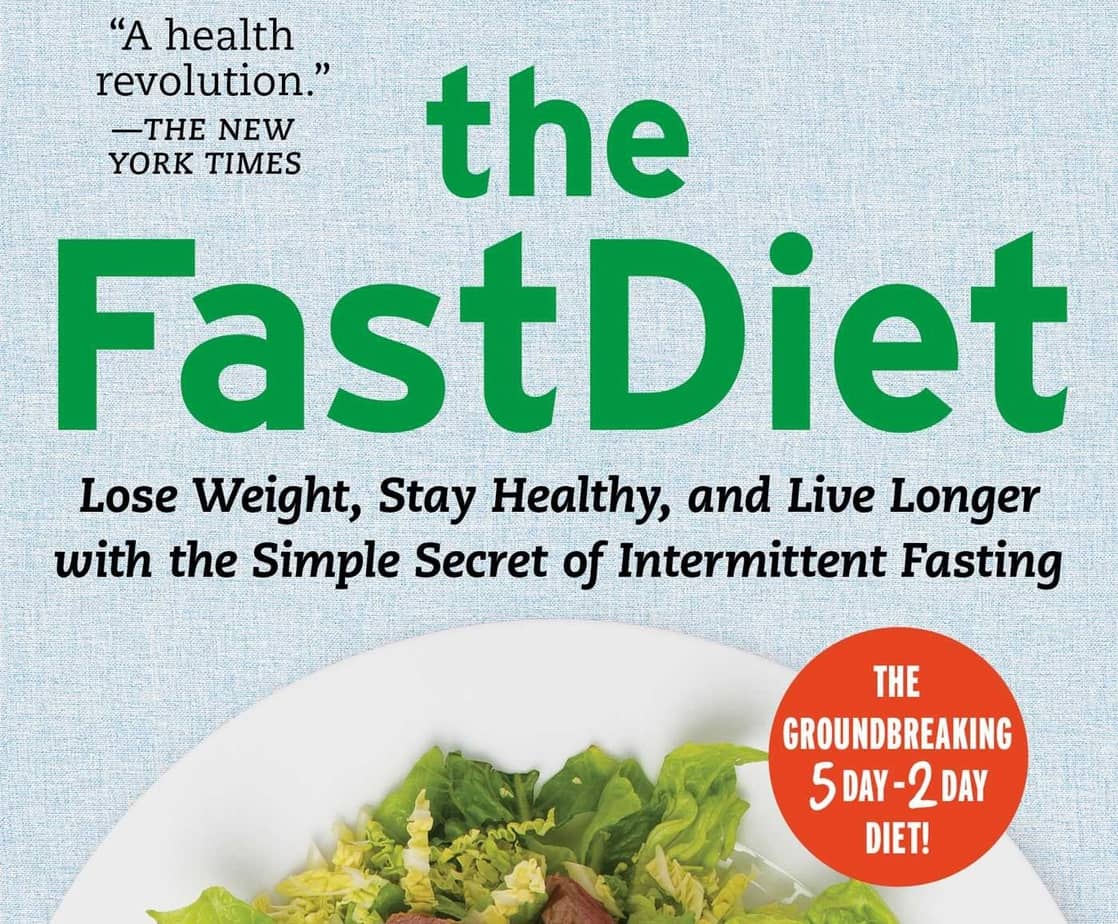
23
Jan“IF:” Intermittent Fasting… The Last Best Thing
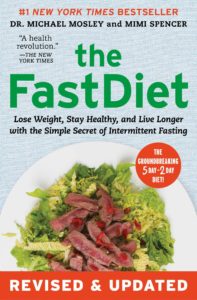 I first heard about IF in the workplace. A colleague had dropped a significant amount of weight in less than a year, and I was intrigued. When this colleague told me about IF, I was dubious, but, results speak for themselves. Still, I hesitated. Going hours without eating… could I do that? I was just embarking upon a short trip to Sandwich (ha, ha) in September of this year, and while there I visited the Sandwich Library (of course). As I was entering, I saw that they were having an annual book sale. For some reason, the thought went through my mind, “If Intermittent Fasting (IF) is for me, I will find a book for $1.00 on it.” Impossible, right? Not so. I discovered The FastDiet (updated in 2015) by Dr. Michael Mosely and Mimi Spencer. In this particular book, the authors acknowledge the benefits of fasting, but did not want to live a permanently restrictive lifestyle; thus the 5:2 Diet was born… fasting 2 days (eating only 500 calories) and eating normally the other 5. I tried this, but like many others, I found eating 500 calories on the 2 days too difficult. I seemed to be too focused on food and hunger- exactly the opposite of what I wanted. I wanted to find out more about the many other IF options available. My colleague directed me to Dr. Jason Fung and his landmark book, The Obesity Code (2016).
I first heard about IF in the workplace. A colleague had dropped a significant amount of weight in less than a year, and I was intrigued. When this colleague told me about IF, I was dubious, but, results speak for themselves. Still, I hesitated. Going hours without eating… could I do that? I was just embarking upon a short trip to Sandwich (ha, ha) in September of this year, and while there I visited the Sandwich Library (of course). As I was entering, I saw that they were having an annual book sale. For some reason, the thought went through my mind, “If Intermittent Fasting (IF) is for me, I will find a book for $1.00 on it.” Impossible, right? Not so. I discovered The FastDiet (updated in 2015) by Dr. Michael Mosely and Mimi Spencer. In this particular book, the authors acknowledge the benefits of fasting, but did not want to live a permanently restrictive lifestyle; thus the 5:2 Diet was born… fasting 2 days (eating only 500 calories) and eating normally the other 5. I tried this, but like many others, I found eating 500 calories on the 2 days too difficult. I seemed to be too focused on food and hunger- exactly the opposite of what I wanted. I wanted to find out more about the many other IF options available. My colleague directed me to Dr. Jason Fung and his landmark book, The Obesity Code (2016).
Dr. Fung recommends fasting completely on the fasting days- what is called a “clean fast.” This means you drink only black tea and coffee, and consume only plain seltzer, mineral water, etc. I have found, in my short experience, that this is much easier to do than to have only 500 calories on a fast day. This book outlines the ins and outs of a fasting lifestyle, including all the possible benefits. Not only will one reach a healthy weight and maintain it, but you can also expect to have more energy, feel physically better, and stave off any number of age-related diseases (including pre-diabetes and Type 2 diabetes), and IF sharpens your senses and your brain. Dr. Fung explains how the body is more like a thermostat than a scale, and that it is actually certain hormones that dictate a person’s set point weight, and whether they lose or gain weight. Dr. Fung’s main point is that our bodies’ ability to lose (or gain) weight has a lot to do with insulin levels- he quotes it at 75%. Over time, the body becomes “insulin-resistant,” meaning that it takes more insulin to digest foods. Dr. Fung’s solution? Intermittent Fasting, or IF. During a fast, insulin levels drop and eventually our bodies begin to digest stored fat. (This is an extremely simplified version!) Over time, intermittent fasting allows our bodies to “eat” up extra stored fat, and we lose weight. Benefits: no starving, not complicated, no calorie counting, enjoy foods you love most of the time, sustainable; not to mention the benefits of less inflammation, which is a side effect of many diseases and conditions.
After finishing this book, I found a much shorter, simpler book dedicated to IF: Gin Stephens’ Delay Don’t Deny (2017). This book was a true layman’s dream. I learned all about IF, and Gin made the science behind it very readable. I also found Gin’s podcast, Intermittent Fasting Stories and was hooked. I have since listened to 55 episodes, and have “caught up” with the real time podcast. The stories are fascinating, relatable and inspiring, to say the least!
I officially began on November 11th. It has been about 2 months and I am already experiencing some of the benefits. Though I haven’t weighed myself (I’ve always had a hate/hate relationship with the scale), I have gone down one pants size, which is incredible, since I have been eating all the things I love during my “eating window,” including sweets! I also have always been an emotional eater; this began when I was 6 years old and remember having some M & M’s shoved at me as I was told about the passing of my beloved “Pampa.” I remember the tears streaming down my face as I ate them, enjoying the sweet taste of the candy, but missing him already. Though I experienced another great loss this past October with the death of my mum (I called her “Mumsky”), I was determined to give IF a solid try. It has been so helpful with the emotional part of eating. I have been forced to face my feelings and let everything hurt, like it does, like it will, like it should, as I come to terms with losing her. Mum was only 70 years old but suffered from a host of health issues, including Type 2 Diabetes and COPD. Witnessing her last weeks in the hospital and in the nursing home influenced my decision to try IF.
Having been a dieter for over 40 years, I am always on the lookout for “the next best thing.” However, as I read (and listen to) more about IF, and as I try it myself, I can see it as a lasting lifestyle, not a diet to be put aside during the holidays or special occasions. Intermittent Fasting is not just the latest diet for those seeking a permanent weight loss solution. Intermittent Fasting is a complete change of mindset toward food and nutrition, and is backed up by science.
I look forward to reporting on my progress in a future article. Look for “IF: Intermittent Fasting, The Last Best Thing” Part Two!
Carla Howard is the Senior Circulation and Media & Marketing Assistant at the Morrill Memorial Library in Norwood, MA. Look for her article in the January 23, 2020 issue of the Transcript and Bulletin.

16
JanMaking Room
 My husband and I are three-time greyhound adopters, and we said a sad farewell to our last hound in March. Lahni was nearly thirteen years old, and was the hardest luck case in our bunch. She had been adopted out, then returned to the agency about nine months later. Upon inquiring why, we learned she hadn’t done well being on her own during the day. Once back at the agency she was allowed to roam free in the hall because she wouldn’t tolerate being crated. Lahni had languished for over a year in this state of limbo while other dogs with fewer issues came and went.
My husband and I are three-time greyhound adopters, and we said a sad farewell to our last hound in March. Lahni was nearly thirteen years old, and was the hardest luck case in our bunch. She had been adopted out, then returned to the agency about nine months later. Upon inquiring why, we learned she hadn’t done well being on her own during the day. Once back at the agency she was allowed to roam free in the hall because she wouldn’t tolerate being crated. Lahni had languished for over a year in this state of limbo while other dogs with fewer issues came and went.
We had actually been to this place on several occasions to meet and walk different dogs, following the heartbreaking loss of our first greyhound, Abby. We were determined to hold out on adopting again until we felt the same magic spark we’d experienced with her. Unfortunately, none of the candidates had stood out for us. One day after another failed attempt, we offered to walk Lahni. She wasn’t a consideration for us given her anxiety issues, but she looked like she could use a change of scenery.
Outside the confines of the kennel, a whole new dog emerged. She was in her glory! She had a jaunty little bounce to her step, sighting on everything that moved and with ears constantly perked up at attention, while her nose sniffed the breeze and then, every few feet, the ground. While I’m at it, I might as well mention that she had the largest ears I’ve ever seen on a greyhound. If I didn’t have the National Greyhound Association registration with her pedigree I might wonder if she was actually a purebred greyhound, owing to those elephantine antennae. But I digress. Her transformation on our walk was remarkable. While the other dogs had dutifully gone along with us, this one was on a mission. When we eventually turned back, she was crestfallen, and her pace slowed considerably.
As we made our way back we considered the situation anew. Yes, she had issues and might take some work. However it was beginning to dawn on us that we could look for the rest of our lives and never find another Abby. Lahni could also be waiting the rest of her life for someone. Maybe we should be thinking about something new: giving back. While they’d warned us about her anxiety being alone during the day, we secretly wondered if maybe the former adopter or environment just hadn’t been a good match. (When I later recalled this notion, I had a great laugh at my own expense – oh the hubris!)
We decided to go for it, and the adventure began. After an unsettling week or so during which we’d regularly come home to find Lahni had been sick to her stomach while we were at work, we took her to the vet. Following a series of expensive tests that showed nothing was wrong, the vet gave it to us straight: She needs company. Which is how we found ourselves in the hitherto unimaginable position of getting a dog for our dog. Back to the agency we went, and as luck would have it on that day, there was a new arrival. A brindle, like our first, but that is where the similarity ended. This one stared at us, wide-eyed, unmoving. As I crouched in front of her, looking into those unblinking eyes, I felt there was someone in there, waiting to be set free. And do you know what? There was. But that’s another story.
Lahni was a new dog once she had company. While she never did warm to me as much as she did my husband, we were able to give her a good life with lots of walks. With the addition of two greyhounds, our formerly carefree days became more complicated, expensive, and sometimes even circus-like, but mainly joyful and never boring. Now that they are gone, the quietude of our home feels less like peace and more like loneliness. Although we likely have not owned our last greyhound, we are taking a moment to regroup. It is difficult for us to wait, but easier on our would-be dog, given current schedules.
This lonely, dog-free time in our lives is no doubt what had me reaching for The Dog Stays in the Picture: Life Lessons from a Rescued Greyhound, by Susan Morse. She decides to adopt a retired racer as her last two teens head off to college. This choice disrupts the plans she and her husband have for entering their liberated, empty nest years. Although this didn’t really scratch my itch for a dog-lover’s read I kept at it, in part comforted by the knowledge that I wasn’t the only person to be tolerated by a greyhound while a spouse is adored. In spite of the title, the book is more of a general memoir; stories about the challenges of adopting a greyhound are woven together with past and present reflections on her college-bound children, traveling-for-work actor husband and even a health crisis. And perhaps that is the point: making room for this singular breed in a life underway takes a little bit of doing, but will pay you back. Given the absolute lack of real-world context for dogs who have only known a racetrack environment, their general confusion is understandable (what is my purpose here?) As is their inexperience with practical concerns such as stairs (how do they work?) and glass doors (solid). The foibles Morse describes are familiar and perhaps even endearing to me.
National Adopt-a-Greyhound month is in April, and although the agencies we used when adopting are now defunct, there are numerous others still working to find homes for retired racing greyhounds. Visit the Greyhound Project website for a directory of agencies and other resources. To learn more about the breed, check out Cynthia Branigan’s Adopting the Racing Greyhound, or Retired Racing Greyhounds for Dummies, by Lee Livingood.
Kirstie David is the Literacy/Outreach Librarian at the Morrill Memorial Library in Norwood, MA. Look for her article in the January 16, 2020 issue of the Transcript and Bulletin.

2
JanJoy of Cooking – Gadgets
 While I received several beloved small kitchen appliances for shower and wedding gifts nearly a half-century ago, most of them were resigned to the graveyard for kitchen gadgets over the years. I abandoned the electric can opener decades ago, along with the electric wok and labor-intensive turn-the-crank ice cream maker. If one of my small appliances was left abandoned in the cabinet above the refrigerator, or to the garage shelf behind the holiday décor, it was out of sight and out of mind. Those items never made the trip on the many moving vans as our family drove or flew to our new home. If it did get packed for the move, it may have stayed packed. Mice and spiders found cozy homes in tangled cords or Teflon coatings, and entire boxes were tossed into dumpsters in eventual clean-outs.
While I received several beloved small kitchen appliances for shower and wedding gifts nearly a half-century ago, most of them were resigned to the graveyard for kitchen gadgets over the years. I abandoned the electric can opener decades ago, along with the electric wok and labor-intensive turn-the-crank ice cream maker. If one of my small appliances was left abandoned in the cabinet above the refrigerator, or to the garage shelf behind the holiday décor, it was out of sight and out of mind. Those items never made the trip on the many moving vans as our family drove or flew to our new home. If it did get packed for the move, it may have stayed packed. Mice and spiders found cozy homes in tangled cords or Teflon coatings, and entire boxes were tossed into dumpsters in eventual clean-outs.
There are, of course, those favorite kitchen gadgets that I adore and use often. In the 1970s, I served my sister-in-law Minute Rice for dinner. She was the daughter of Japanese-Hawaiian parents, and she promptly gifted me with a Panasonic rice cooker that Christmas. (Rice, after all, is a sacred dish to be cooked properly!) I’ve cherished that cooker for nearly fifty years, and amazingly, it still works perfectly after hundreds of uses.
In the mid-80s, I joined millions of home cooks around the world who added Cuisinart food processors and KitchenAid stand mixers to their culinary repertoire. I took classes in the local mall’s cooking school, perfecting pie crust and pizza dough. I abused and overused both the food processor and mixer to their deaths, but happily replaced both of them recently. The Kitchen Decoded, by Logan Levant and Hilary Hattenback, published in 2014, is a perfect introduction to kitchen tools and accessories such as the food processor and stand mixer. The book is a “fun, new cookbook with chapters organized according to gadgets and appliances, and accompanying recipes that can be prepared with each tool.”
This past holiday, I found myself using many of my favorite countertop time-savers as they played musical chairs, coming and going from their cozy storage places in cabinets and closets to space on the countertops. We have a family holiday tradition of squeezing fresh orange juice on Christmas morning, so the electric juicer shared space with the automatic bread maker. The ice cream compressor was later replaced by the pasta machine which was then replaced by my trusty rice cooker an hour before dinner.
Immediately after our early holiday breakfast opening gifts, my young granddaughters ooohed and ahhhed as red-and-white-striped peppermint chunks slowly churned into creamy vanilla ice cream. It all turned decidedly pink and when the compressor was done- the luscious frozen cream was packed into the freezer to harden. I started with the basic recipe in Jeni Britton Bauer’s 2011 Jeni’s Splendid Ice Creams at Home. It’s my go-to book for delicious homemade treats.
Later that morning, we slowly poured a mixture of water, eggs and oil into semolina flour that rotated in the Phillips pasta machine. The girls excitedly awaited the moment they could begin to cut the emerging macaroni into uneven lengths that don’t seem to matter when they are mixed with cheese sauce to become Boxing Day’s macaroni and cheese. At the same time, my daughter arranged meaty lamb chops in the sous vide water bath so that they could slow-cook to perfect tenderness for a few hours in the afternoon. Before dinner, we would sear them on the gas stovetop until all six sides were crispy. The best thing about the sous vide process is that food can sit for hours at a warm temperature, awaiting just that right moment of preparation for the table.
A great book for anyone wanting to try out sous vide equipment and recipes is Hugh Acheson’s latest book published in 2019, Sous Vide: Better Home Cooking. Acheson has been a professional chef for years and at first he scoffed at younger chefs who used the sous vide technique in restaurants. Over time though, he realized that the sous vide method also had a huge impact on preparation and on taste and he has written this book for home chefs.
Later in the afternoon, I guarded the stand mixer as it creamed sugar and eggs and flour, and blended in and fruit for a spongy orange-cranberry cake. As my husband Gerry cleaned and dried each kitchen gadget, lifting it to its storage place, I swept flour and baking powder dust from the floor and washed butter, sugar and egg drippings from the counters. I wondered how 19th and 20th century grandmothers managed to get everything done in time for holiday dinners. Did they smile and grimace as little ones insisted on helping? I imagined that an army of cousins in huge households of extended families entertained the littlest ones, while the older ones took on tasks of cutting fruit and vegetables or creaming butter and sugar with a rotary beater. Gerry tells me of watching his Italian grandmother roll pasta into thin sheets with a clean broom handle, cutting it precisely while using that same handle as a straight edge.
Speaking of Gerry, he came home a few weeks ago with an Instant Pot. Giving in to chatter about this recent phenomenon (a recent and safer alternative to the pressure cookers of the past), he thought it would be fun to figure out how to use it. Facebook Instant Pot 101 posts rave about its miracles. “You’ll want at least two or three of them!” or “You’ll never use your oven again!” I took it out of the box and made several attempts to use it. I am not convinced that it will become one of my cherished kitchen gadgets. An entire chicken took nearly as long as it would have if it had been roasted in the oven (after allowing for browning, cooking, and pressure-release). This new Blueberry French Toast had no crisp or crunch that I expected of my oven-baked rendition.
Perhaps I just need more time and a few books from the library. The Instant Pot Bible (“the only book you need”), by Bruce Weinstein and Mark Scarbrough, might be useful, and my daughter swears by the Instant Pot Vegetarian Cookbook by Nadine Greeff. With time and plenty of books from the library, anything is possible in my kitchen, and in yours, as well. Happy new year of joyful cooking.
Charlotte Canelli is the Director at the Morrill Memorial Library in Norwood, MA. Look for her article in the January 9th, 2020 issue of the Transcript and Bulletin.
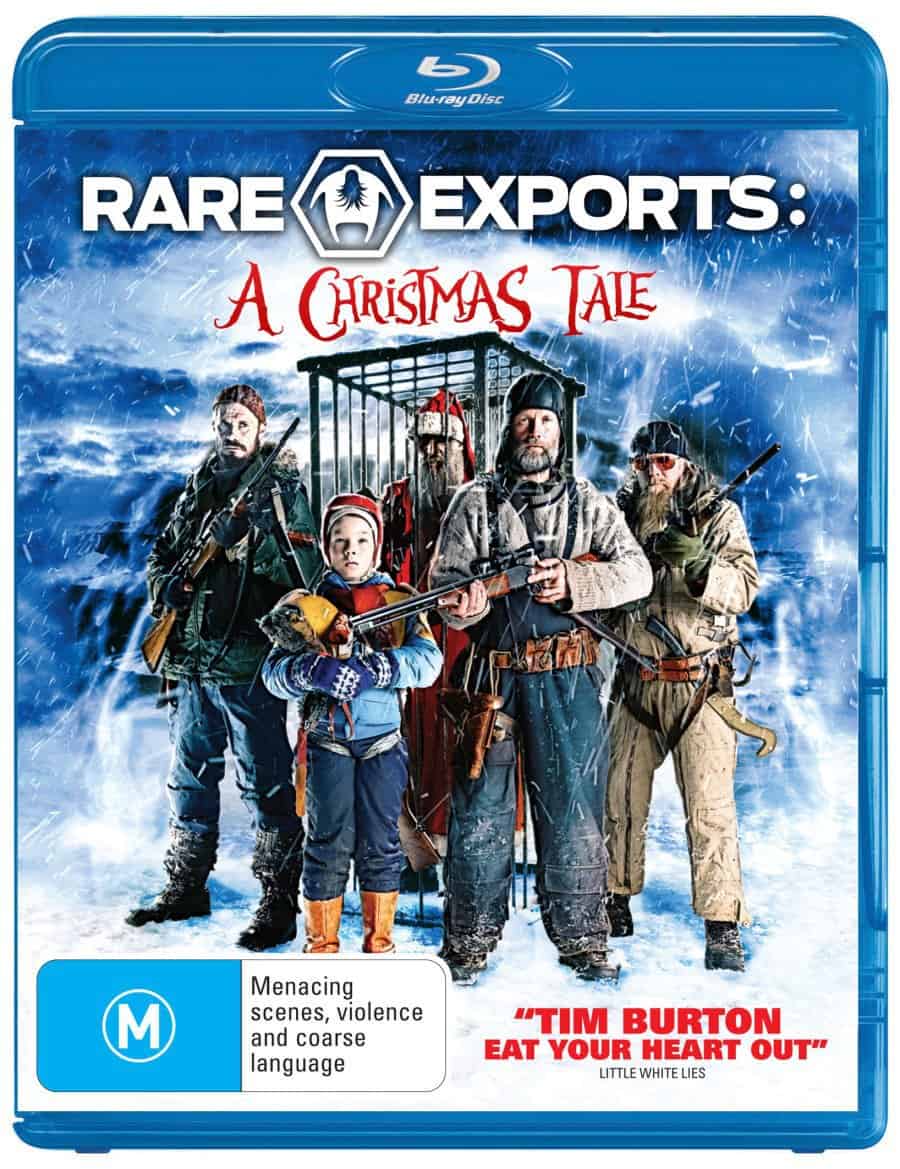
26
DecAn Unconventional Spin on Holiday Films
 With another Christmas gone by and the New Year approaching I’ve just about finished my annual tradition of binge-watching holiday movies. Ever since childhood I’ve associated the month of December and its corresponding onslaught of decorations, carols and cookies with a television set airing non-stop seasonal programming. As I’ve gotten older, though, my tastes have changed.
With another Christmas gone by and the New Year approaching I’ve just about finished my annual tradition of binge-watching holiday movies. Ever since childhood I’ve associated the month of December and its corresponding onslaught of decorations, carols and cookies with a television set airing non-stop seasonal programming. As I’ve gotten older, though, my tastes have changed.
Once upon a time we didn’t have Netflix or Hulu or DVRs. Before then we didn’t have DVDs or cable television, or even VHS tapes. During my childhood we had no option but to scour the (print) TV guide that came with the Sunday newspaper and keep track of when Christmas specials would air. I could hardly contain my excitement anticipating the animated How the Grinch Stole Christmas, A Charlie Brown Christmas, and Frosty the Snowman. My absolute favorites, though, came out of the Rankin/Bass stop-motion studio and included Rudolph the Red Nosed Reindeer (featuring Bumble the abominable snowman) and The Year Without a Santa Claus (featuring the brothers Heat Miser and Snow Miser).
Back then we had to mark our calendars and tune in at specified dates and times to watch these classics. Nowadays you can look up any of these in the Minuteman Library Network catalog and borrow them, or likely find them available on-demand to stream with the touch of a finger. This convenience allows for the discovery of hundreds of holiday films, and I have been enjoying watching some less-traditional picks this year.
If you tire of wholesome classics like Miracle on 34th Street and White Christmas, I recommend The Night Before, starring the comedic duo Seth Rogan and Joseph Gordon-Levitt. Along the same irreverent lines, R-rated options include Bad Santa, starring Billy Bob Thornton, Office Christmas Party, starring Jason Bateman, and A Bad Moms Christmas, with Mila Kunis and Kristen Bell. Rife with drunkenness, drug use, and exotic dancers, these choices may not be kid-friendly, but could lift the spirits of harried grownups this holiday season.
Amid the chaos of shopping and preparations, some movies offer relief by depicting Christmases gone horribly wrong. Imagine cute gifts turning into monsters and wreaking havoc as the mogwai do in Gremlins. Think your family is high maintenance? In The Ref, a burglar takes an entire family Christmas party hostage and the attendees become so unbearable you find yourself empathizing with the criminal. In the alternative classic, National Lampoon’s Christmas Vacation, hapless Clark Griswold (Chevy Chase) finds his plans to engineer the perfect holiday going terribly awry.
As a horror movie fan, I gravitate toward Halloween flicks more readily than the Christmas classics, but fortunately some cross-genre films eliminate the necessity to choose between the two. Some, of course, fall into the so-bad-they’re-good category, such as Silent Night Deadly Night and Jack Frost (and its sequel). I genuinely and non-ironically enjoyed Krampus though, and just discovered Rare Exports, which may rise to the top of my all-time favorites list. Both films hearken back to mythological origins of today’s sanitized Santa Claus. Krampus brings the eponymous Central European creature into the dysfunctional American family setting in a decent yet typical slasher film. The Finnish gem, Rare Exports, focuses on Joulupukki, the pagan Christmas goat. In a rare feat it combines comedy, horror, lovely cinematography, and touching father/son relationships.
What if you’re sick of Christmas altogether? Adam Sandler’s Eight Crazy Nights stands out as the most well-known of the few Hanukkah movies out there, and will have you humming “The Chanukah Song” from its soundtrack till New Year’s Day. Speaking of which, New Year’s Eve, while met with mixed reviews, features an all-star cast directed by Garry Marshall. Departing from holidays altogether, The Shining and Misery, both based on Stephen King books, depict what can happen as a result of getting snowed in. On a more upbeat note, the heartwarming Edward Scissorhands has beautiful ice sculptures and snowfall without overabundant Christmas imagery.
During the last week of the year I still have some appetite left for yuletide viewing. I plan to settle in with a hot chocolate for a Die Hard and Die Hard 2 double feature to watch John McClane endure a couple of harrowing Christmas Eves. Perhaps I’ll venture out to the cinema to add something new to my list. Blumhouse Productions, the company known for Halloween and Happy Death Day, has just released Black Christmas, in theaters now!
Lydia Sampson is the Assistant Director at the Morrill Memorial Library in Norwood, MA. Look for her article in the January 2nd, 2020 issue of the Transcript and Bulletin.
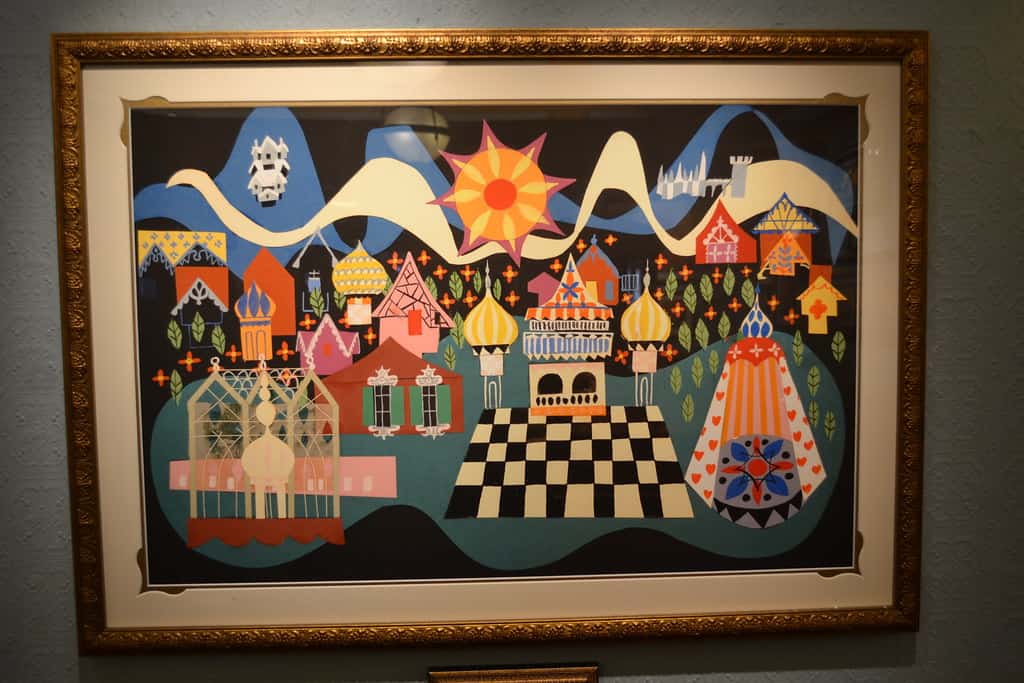
19
DecThe Women Who Drew My Childhood
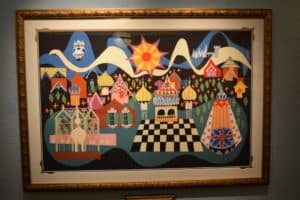
Painting by Mary Blair
When I was about three or four years old, my parents took me to my first movie in a theater – Disney’s Snow White. They weren’t sure if I would be able to sit still, or if I would be overwhelmed by the darkness or the sound. But I sat there, completely entranced, for the entire film. Only when it ended and the lights came up, did I start to sob. My parents were startled, and as they ushered me out of the theater, they kept reassuring me, “It was just a movie! The witch isn’t real!” But as I sobbed through the parking lot, the adults within earshot burst into laughter as I choked out “I… just… didn’t want it… to end!”
This is a memory that has stayed with me, and I have always thought about it through the lens of storytelling and its universal power. I have always loved stories in all forms, especially books and movies. But recently, as I saw a colleague checking out a book about the female artists who worked at the Walt Disney Studios, something else occurred to me. I had thought for years about the stories and intricate artwork in Disney, but had never known much about who was behind it all. I needed to learn more about the women who helped tell these powerful stories.
The Queens of Animation by Nathalia Holt, is the story of the women who worked to create and shape the animated Disney movies, from 1937’s Snow White to Frozen. Early on, these were women who were inspired by seeing some of the first Disney cartoons, like Steamboat Willie, and made it their mission to work at the studio.
Unsurprisingly, it was difficult to find work as a woman in animation in the 1930s. Job postings were listed in areas of Men’s Work and Women’s, and most professional jobs did not mix genders. Originally, the Disney studios only employed women in its Ink and Paint Department. Talented male artists were hired as animators or assistant animators, and they were the artists who worked with the Story Department to create the characters and stories that needed to be drawn. Once completed, the images were sent over to the women of the Ink and Paint Department to trace in smooth India ink onto the transparent cells, and after the advent of color movies, paint them. Though integral to every picture- films that are considered some of the most timeless classics in American cinema- these women were never credited as artists, and were paid a fraction of what male artists made.
But Walt Disney was a man of chance and innovation. Though he did not set out to employ women, he also recognized talent when he saw it. Holt’s book centers on five women who helped make Disney into the company we know today: Bianca Majolie, Grace Huntington, Sylvia Holland, Retta Scott, and Mary Blair.
The first woman he hired was an old classmate of his, Bianca Majolie, whom he took on as a storyboard artist in 1935. Bianca would create many story treatments for the company, and helped mold films like Snow White, Bambi, and Pinocchio (which she also translated from the original Italian for the studio).
In 1936, Disney hired Grace Huntington as a writer. Grace would lend her intellect and wit to the early Disney films, and she was a great screenwriter. She was also a record-setting pilot, and what she really wanted to do was fly. Unfortunately, even during a shortage of male pilots during World War II, no one would hire a woman.
Sylvia Holland, the second woman to be hired in the storyboard department, was an accomplished artist and musician. Her musical knowledge would prove invaluable, helping Disney find the right music to use in his films, which would shape emotional elements of the story. Holland chose the music from the Russian ballet, The Nutcracker, to use in the film Fantasia. The use of this music in the film helped reintroduce the ballet to America, where it had previously been a failure with audiences.
Retta Scott would become the first female animator given screen credit in a Walt Disney Animation Studios picture. This is remarkable, as screen credits were rare for most animators, and generally the competition was cut-throat among the most senior animators working on a film. Retta worked on several Disney films before becoming an artist at Golden Books, where she helped create some of the most successful children’s books of the time.
Eventually, Holt focuses on the most influential of her subjects, Mary Blair. Blair was brought in as a storyboard artist, and she would influence the company like no one else. Originally, Blair’s husband Lee was hired as an animator, but Mary was the one who would enchant Walt Disney and become one of his favorite artists. Her playful paintings, with bright colors and flat, modern style would inspire the feel of films like Cinderella, Alice in Wonderland, and many more. She would be the artist Disney would return to again and again, to create the magical feel for his stories. Blair created an exhibit for Disney’s presentation at the 1964-1965 World’s Fair entitled “It’s a Small World.” The concept would prove so popular that he replicated it in his theme parks and these attractions are still active today. After working for Disney, Mary would join her lifelong friend Retta Scott at Golden Books, bringing her colorful modern style to children’s literature.
These exceptional women were largely forgotten for many years, and most of them did not enjoy much recognition in their lifetimes. Only recently has their work been rediscovered and properly studied. In addition to Nathalia Holt’s The Queens of Animation, Mindy Johnson has written two books about the women of Disney. Ink and Paint: The Women of Walt Disney Animation is a coffee table book featuring photographs of the women who worked at the Disney Studios, and abundant samples of their art. Johnson also created a book aimed at a younger audience, Pencils, Pens and Brushes: A Great Girl’s Guide to Disney Animation, which takes her research from Ink and Paint and creates illustrated collected biographies of the female animators. Mary Blair has several books about her, including The Art and Flair of Mary Blair by John Canemaker, a stunning biography and appreciation of her art.
Even though I didn’t know these women’s names, their artwork and craft has been inspiring me throughout my life. Now that I’ve read The Queens of Animation, I know who to thank for the joy some of the timeless Disney films mentioned above provide again and again.
Nicole Guerra-Coon is the Assistant Children’s Librarian at the Morrill Memorial Library in Norwood, MA. Look for her article in the December 26, 2019 issue of the Transcript and Bulletin.
